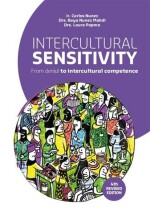Working with Hofstede's 6 Dimensions of Culture - Uncertainty Avoidance
4 important questions on Working with Hofstede's 6 Dimensions of Culture - Uncertainty Avoidance
High uncertainty avoidance countries:
- Latin America (biggest part)
- Latin Europe (France, Italy, Portugal, Spain, German-speaking countries)
- Mediterranean (Greece, Malta, Morocco, Turkey)
- Central Europe (Poland, Czech Republic, Hungary)
- Asia (Japan, Korea, Taiwan)
Low uncertainty avoidance
What is the differance between high and low uncertainty avoidance?
And in a Low uncertainty avoidance society people have more flexible rules. Uncertainty is normal
- Higher grades + faster learning
- Never study anything twice
- 100% sure, 100% understanding
Low uncertainty avoidance countries in europe
The question on the page originate from the summary of the following study material:
- A unique study and practice tool
- Never study anything twice again
- Get the grades you hope for
- 100% sure, 100% understanding
































